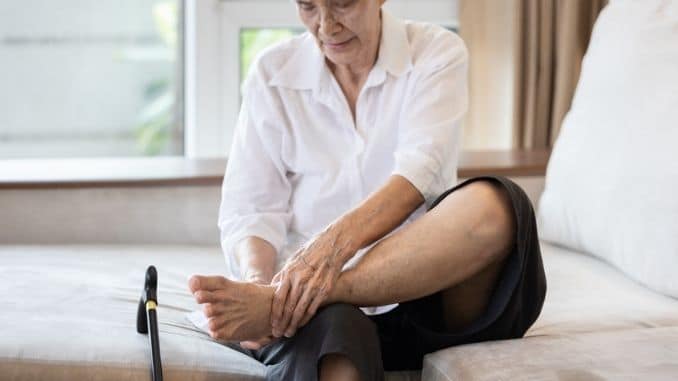
Peripheral neuropathy is weakness, numbness, and pain, usually in the hands and feet, resulting from damage to the nerves outside of the brain and spinal cord (peripheral nerves). It can result from numerous causes, such as traumatic injuries, infections, metabolic problems, or exposure to toxins. One of the most common causes of peripheral neuropathy is diabetes. People with peripheral neuropathy generally describe the pain as stabbing, burning, or tingling.
Some cases of neuropathy can be easily treated and even cured. However, not all neuropathies can be improved. In these cases, treatment is aimed at controlling and managing symptoms and preventing further nerve damage. It is important to know what is causing your neuropathy in order to treat the underlying cause and relieve or manage symptoms.
Effective prognosis and treatment of peripheral neuropathy rely heavily on the cause of nerve damage. For example, peripheral neuropathy caused by a vitamin deficiency can be treated or even reversed with vitamin therapy and an improved diet. Likewise, nerve damage brought on by alcohol abuse can often be improved simply by avoiding alcohol. Peripheral neuropathy caused by toxic substances or medications can often be corrected in much the same way. When neuropathy is related to diabetes, careful monitoring of blood sugar levels may slow its progression and curb symptoms.
Early diagnosis and treatment of peripheral neuropathy are important because peripheral nerves have a limited capacity to regenerate, and treatment may only stop the progression, not reverse damage. If you have become severely impaired, you may need physical therapy to help retain strength and avoid muscle cramping and spasms.
The good news is that exercise has proven to positively impact those with peripheral neuropathy. With exercise, those suffering from neuropathy have shown improvements in nerve function, reductions in neuropathic pain, reductions in sensory dysfunction such as numbness, and improvements in mobility. Regular physical activity can also improve blood circulation, which can strengthen nerve tissues by increasing the flow of oxygen.
Below we have shared some recommended exercises for Peripheral Neuropathy.
Finger & Hand Exercises
Exercise #1
Touch the pad of your thumb with the pad of your index finger, then slide your index finger down to the base of your thumb. Repeat this movement twice with each of your fingers in succession.
Exercise #2
Place the palms of your hands on your lap. Lift both of your index fingers and tap them on your lap twice. Repeat this movement with each finger in succession.
Exercise #3
Clasp your hands loosely together and circle your thumbs around each other. Repeat the movement in the opposite direction.
Exercise #4
Roll a 2 – 4 inch in diameter ball between your hands and up and down each finger. This exercise stimulates the receptors in your palms and fingers.
Exercise #5
Touch the tip of your thumb to the tip of your index finger, making a circle. Stretch your hand open. Repeat this movement with each finger in succession.
Flexibility Exercises for Your Feet
Calf Stretch
Start in an upright standing position. Take a big step forward with one foot. Slightly bend your front knee while keeping your back heel on the floor. You should feel a stretch in your calf. Hold this position for 15 – 20 seconds. Return to the starting position and repeat the movement on the opposite side.
Perform 3 repetitions on each side, twice daily.
Seated Hamstring Stretch
Begin by sitting on the front half of a chair with both feet flat on the floor. Extend one leg out in front of your body with your toes pointing upward. Hinge from your hips to slowly lean your upper body forward until you feel a slight stretch in the back of your leg. Hold this position for 15 – 20 seconds. Return to the starting position and repeat the movement on the opposite side.
Perform 3 repetitions on each side, twice daily.
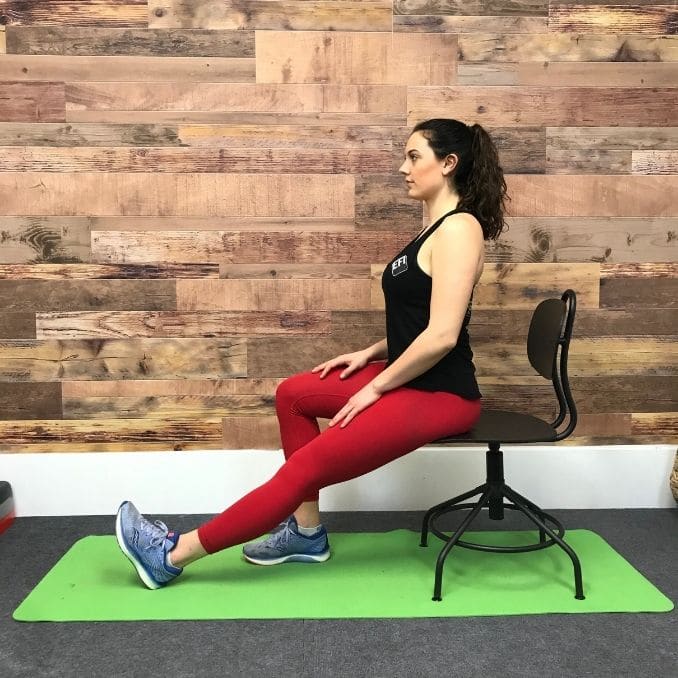 |
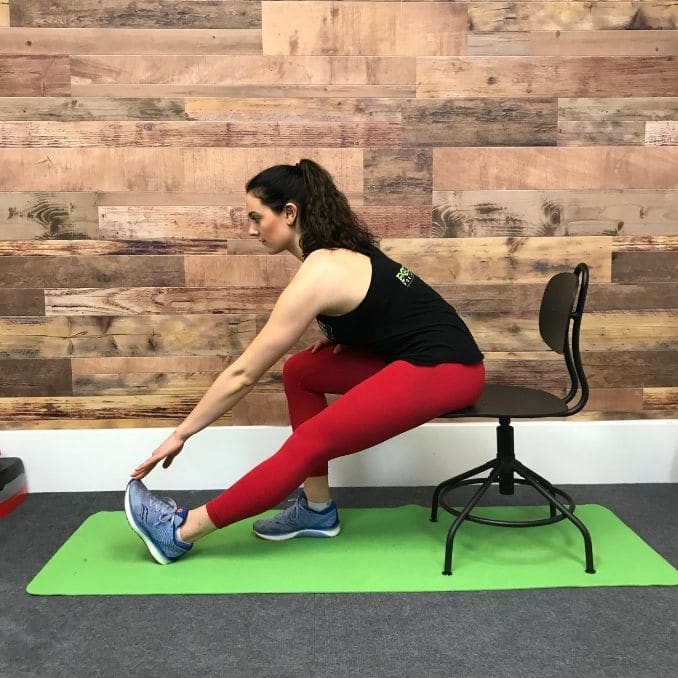 |
Plantar Fascia Stretch
Begin in a standing position facing a wall. Place your heel as close to the wall as possible with your toes on the wall. Slowly lean forward, allowing your heel to slide back slightly as your toes press into the wall. To increase the intensity of the stretch, bend your knee. Hold this position for 15 – 20 seconds. You should feel a stretch in the bottom of your foot and along your heel cord.
Perform 3 repetitions on each side, twice daily.
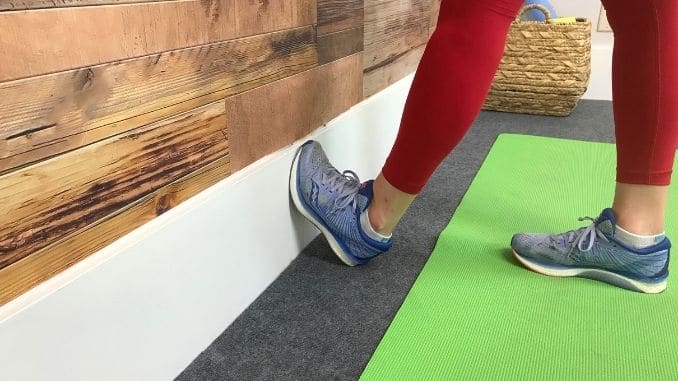 |
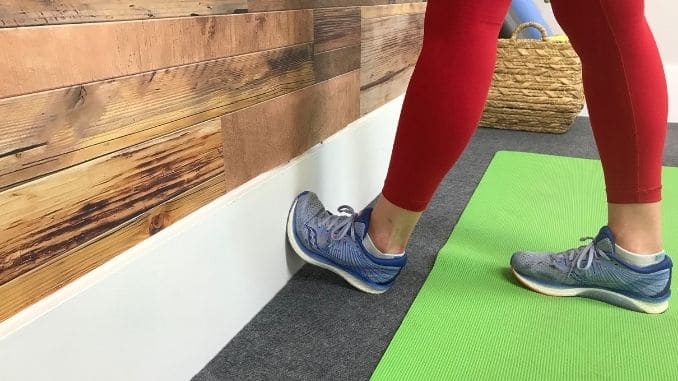 |
Strength Training
Strength training helps decrease the chance of future injuries. It can also help you regain lost muscle strength through repetitive movements. Below are some recommended exercises for you to try at home.
Kitchen Counter Single Calf Raises
Begin in an upright standing position beside your kitchen counter or any other stable, elevated surface. Place two fingertips on the countertop for balance. Transfer all your weight onto one foot. Raise to your toes, then lower your heel back to the floor in a slow and controlled movement. Repeat the movement.
Perform 10 – 15 repetitions on each side, twice daily.
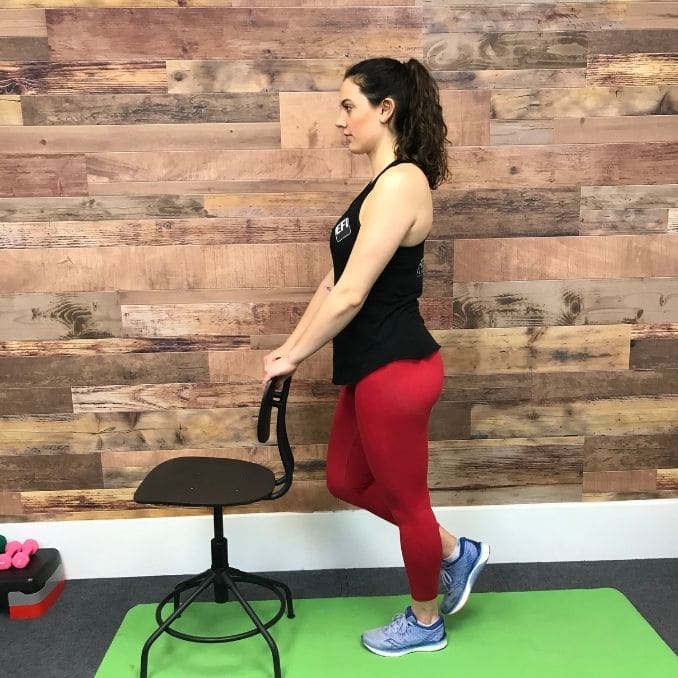 |
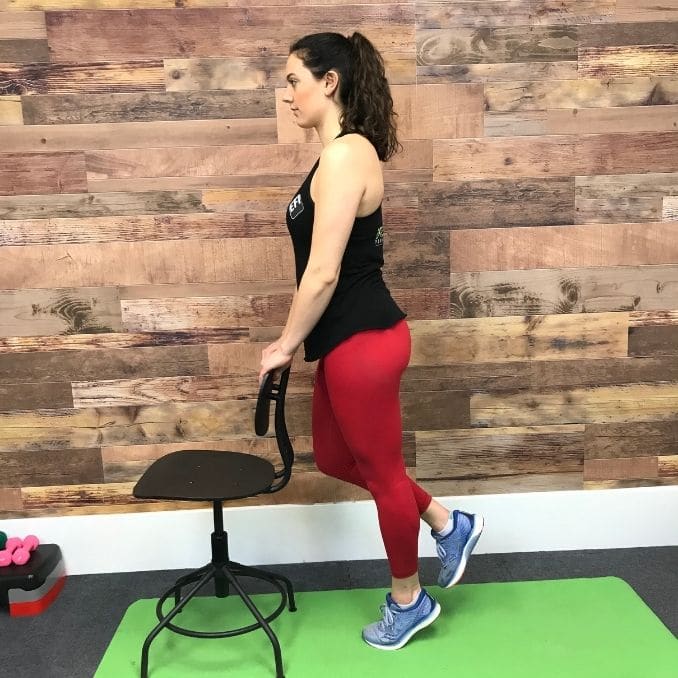 |
Chair Squat
Begin in an upright standing position in front of a stable chair with armrests. Hinge from your hips and knees to lower your seat into a squat position. Briefly touch the chair with your seat, then press up from your legs and glutes to return to a standing position. Repeat the movement.
Perform 10 – 15 repetitions, twice daily.
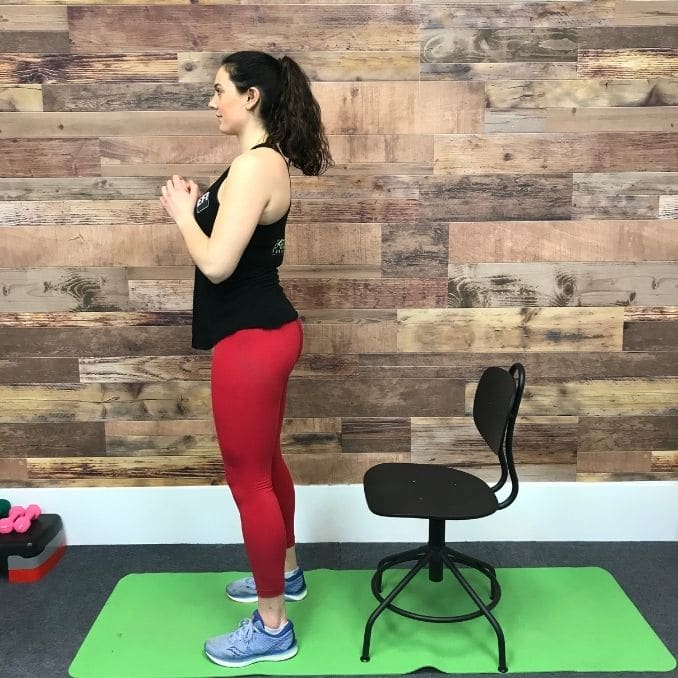 |
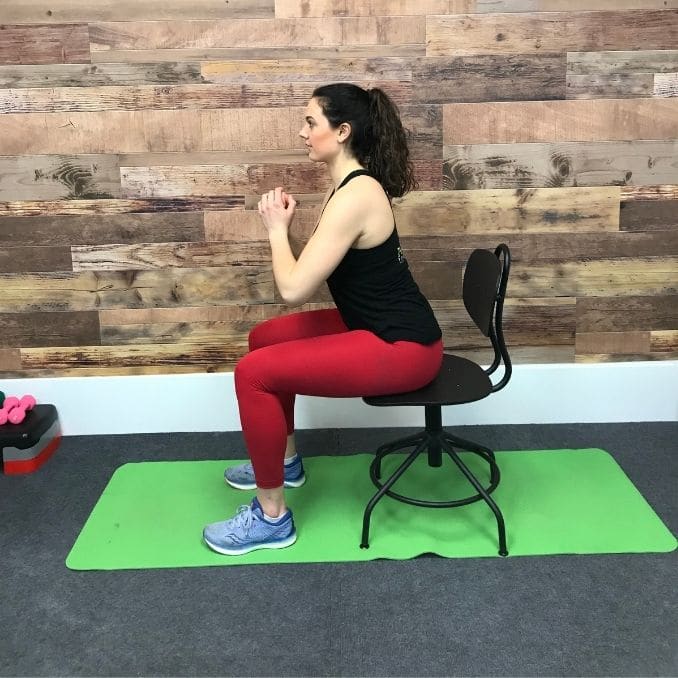 |
Seated Dorsiflexion
Begin by sitting in a chair with both feet flat on the floor. Slowly hinge from your ankles to lift your toes as high as you can. Lower your toes back down to the starting position. To make this exercise more challenging, position your feet closer to your body. Repeat the movement.
Perform 10 – 15 repetitions, twice daily.
 |
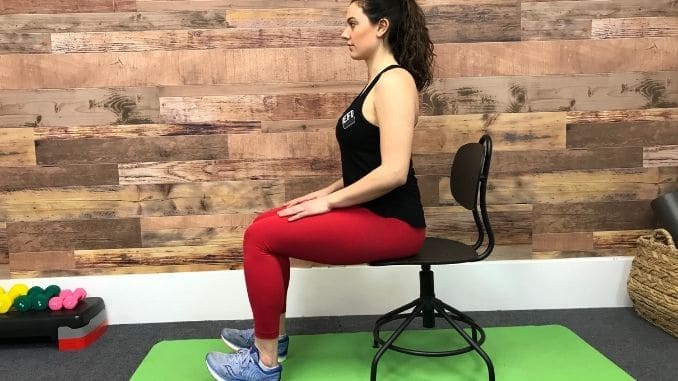 |
Note that balance training is also important, especially if you are experiencing any joint pain, weakness, or dizziness. Balance training can help overcome feelings of stiffness or unsteadiness and is considered a vital practice for all older adults. If you are suffering from peripheral neuropathy, it is important to invest time in all facets of overall physical health, including stretching, strengthening, and balance training exercises.
Reduce your risk of falling by improving your balance safely and naturally. Click here to learn more.

